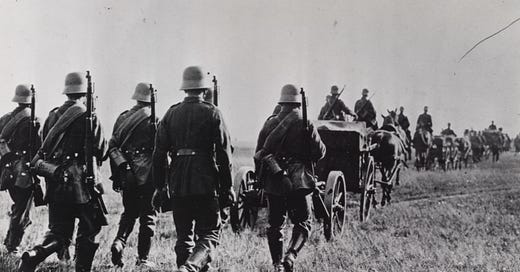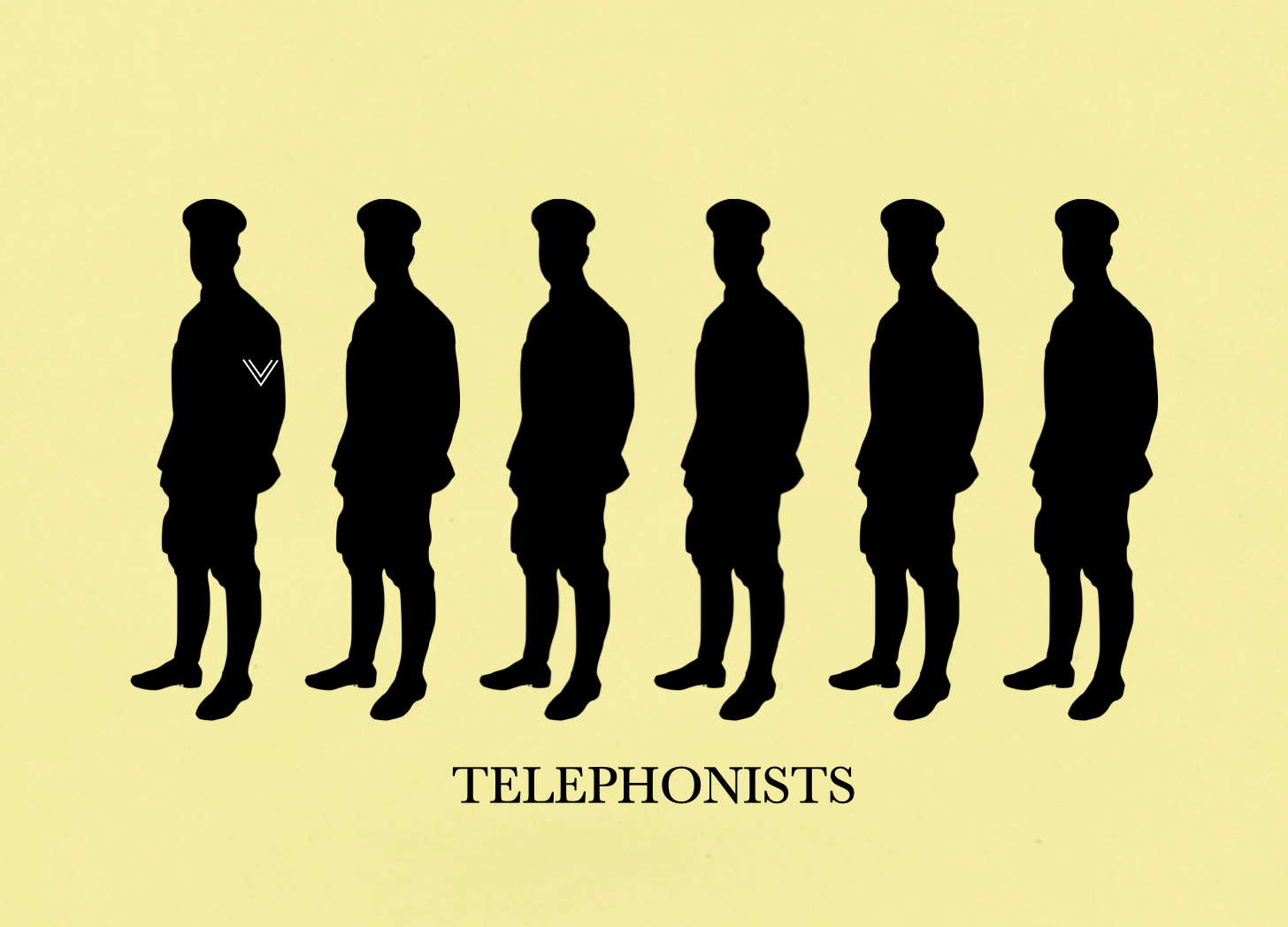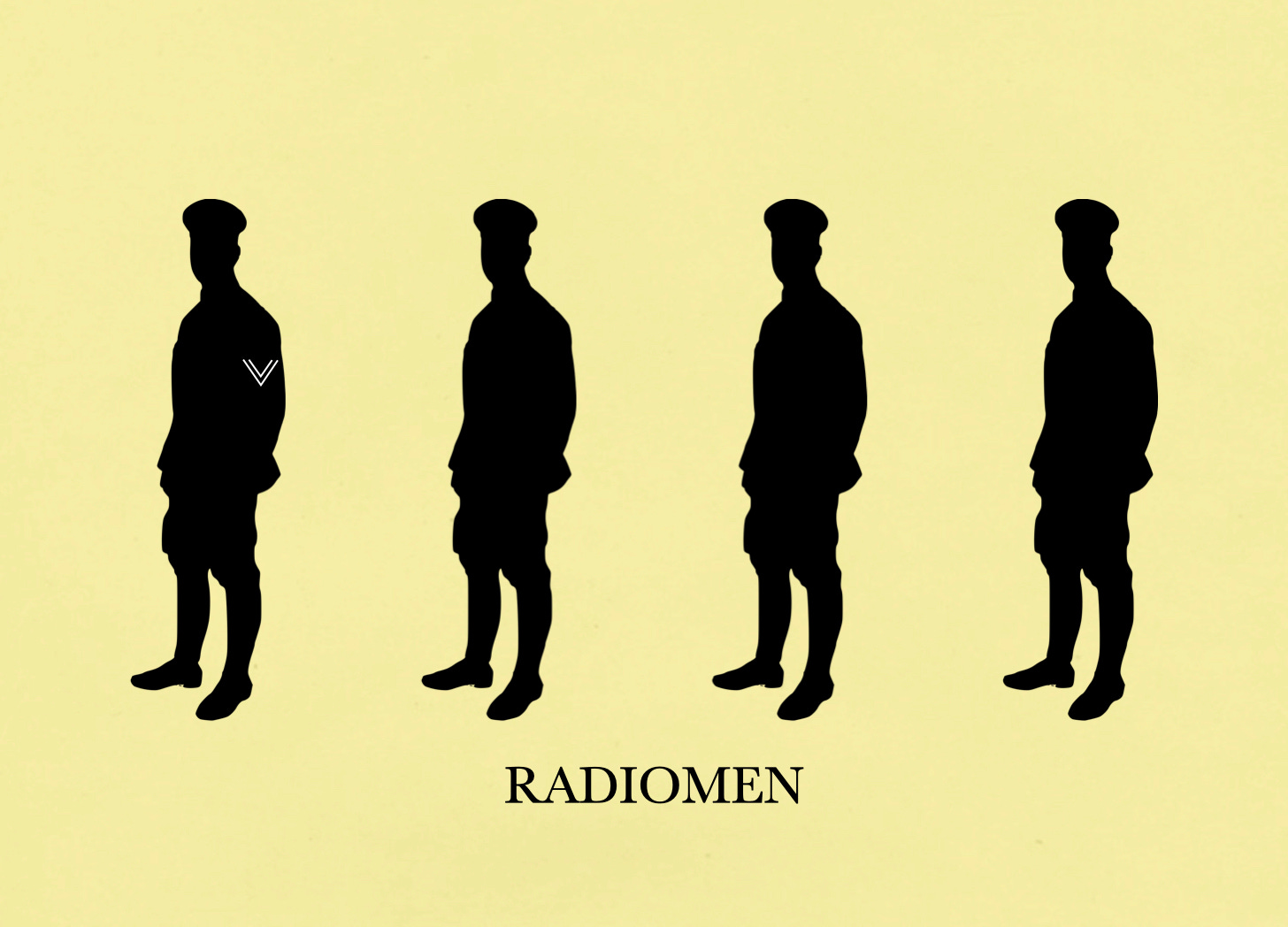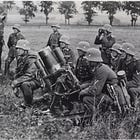Headquarters of a Minenwerfer Company
First installment of a series about a trench mortar unit from 1934
Note: In the course of working on subsequent parts of this series, I discovered tht I had made a number of errors in this article. The version of this piece that follows thus differs considerably from the version posted on 27 May 2024.
Recently, while looking for something else, I ran into a table of organization for a Minenwerfer company of an infantry regiment of the German Army of 1934. As this unit struck me as the ‘missing link’ between the trench mortar companies of the army of the Weimar Republic and the infantry gun companies of the late 1930s, I thought that it might be of interest to readers of The Tactical Notebook.
Before jumping into the particulars of platoons, I would like to present a pair of pictures, each of which introduces three of the silhouettes that I’ll be using in my diagrams. The first of these depicts an officer (lieutenant or captain), an Oberfeldwebel (first sergeant), and a Feldwebel (senior sergeant); the second shows an Unteroffizier (junior sergeant), a Gefreiter (lance-corporal), and a private.
Like its proximate predecessor, as well as many of its successors, the Minenwerfer company of 1 November 1934 broke down into five elements: three light Minenwerfer platoons [Züge], one medium Minenwerfer platoon [Züg], and a headquarters. (The latter bore the awkward-sounding title of ‘company headquarters with company section’ [Kompanie Stab mit Kompanie Trupp].)
The author of the letter that promulgated the establishment for the new Minenwerfer company of 1934 declined to indicate where the ‘company staff’ ended and the ‘company section’ began. He did, however, make it clear that the ‘aiming circle sergeant’ [Richtkreis Unteroffizier] also served as the ‘leader of the survey and weather service’ [Führer Meß und Wetter Dienst]. Likewise, the title of the ‘signal sergeant’ [Nachrichten Unteroffizier] suggests that he supervised the work of the four radiomen and six telephonists.
With these things in mind, it is likely that the ‘company staff and company section’ broke down into four elements:
a squad of signallers
the ‘survey and weather service’
a pair of messengers
a pair of teamsters
I would not be surprised if the messengers and teamsters (who drove a four-horse ‘observation wagon’) reported directly to the first sergeant. However, as the latter also served as the ‘leader of the combat trains’ [Führer des Gefechtstrosses] it is likely that he spent a lot of time away from the command post of the company.
Six of the signallers who served under the signal sergeant set up a telephone system that connected the commander of the Minenwerfer company with his platoon commanders. The other four ran radio sets.
Though responsible for the work of a smaller number of men, the aiming circle sergeant [Richtkreis Unteroffizier] outranked the signal sergeant. Likewise, while all but two of the signallers were privates, four out of five of the number crunchers who worked with the aiming circle sergeant rated the rank of Gefreiter. (This anomaly, I suspect, owes much to the technical character of the duties performed by the three men of the ‘survey service’ [Meßdienst] and the two members of the ‘weather and calculation service’ [Wetter und Rechendienst.])
The ‘leader of the combat trains’ also performed the duties of the first sergeant of the Minenwerfer company. However, as the latter tended to be less tactical than administrative, I suspect that this Oberfeldwebel spent little time at the company command post. Thus, at any given time, the latter consisted of three men: the commanding officer of the company, a dismounted messenger [Melder], and a mounted messenger [Reitende Melder].
The mounted messenger carried the Scherenfernrohr, the pair of tripod-mounted ‘rabbit ears’ binoculars that, when installed in a trench, allowed an observer to gain a close-up view of distant objects without exposing his head.
The table of organization for the Minenwerfer company characterized the two full-time teamsters of the ‘company staff with company section’ as ‘saddle drivers’ [Fahrer vom Sattel]. This indicated that, when the company marched, each rode one of four draft horses that pulled the one horse-drawn vehicle of the company headquarters, the ‘observation wagon’.

Source: Chef der Heeresleitung, letter of 1 November 1934 Organization of the Minenwerfer Company of an Infantry Regiment [Gliederung der Minenwerferkompanie eines Infanterie-Regiments] German Federal Archives [Bundesarchiv] Folder RH 26-12/534 pages 57-60/120-125 [as marked on documents/as shown on slide on viewer]
Source for Photos: US National Archives
For Further Reading:
To Subscribe, Support, or Share:


















we look forward reading